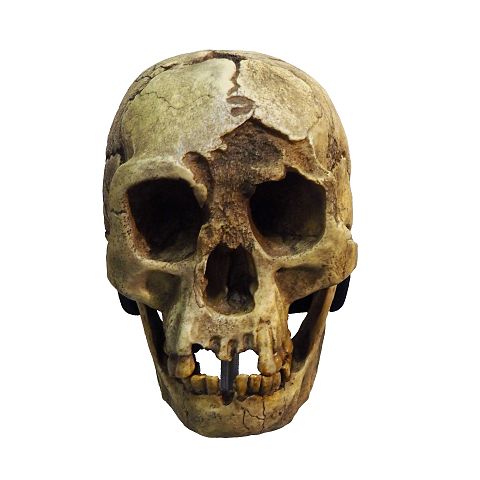Flores Man, scientifically known as Homo floresiensis, is a species of small-bodied hominins that lived on the Indonesian island of Flores. Here’s a comprehensive guide to uncovering the mystery of Flores Man:
Discovery:
- Location: Homo floresiensis was discovered on the island of Flores in Indonesia at Liang Bua, a limestone cave.
- Date: The first fossils were unearthed in 2003, and subsequent excavations have revealed more remains.

Physical Characteristics:
- Small Stature: Homo floresiensis was remarkably small, with an average height of about 3.5 feet (1.1 meters). This led to its popular nickname, “Hobbit.”
- Brain Size: Despite its small stature, the brain size was small, leading to debates about its cognitive abilities. It’s significantly smaller than the brains of modern humans but still larger than those of some earlier hominins.
Dating and Age:
- Age of Fossils: The fossils of Homo floresiensis are estimated to be between 100,000 and 60,000 years old.
- Island Dwarfism: Some researchers suggest that the small size of Homo floresiensis may be a result of island dwarfism, a phenomenon where species evolve smaller body sizes on isolated islands.
Cultural Artifacts:
- Stone Tools: Stone tools associated with Homo floresiensis indicate a level of sophistication in tool use. They used tools similar to those associated with earlier hominins like Homo erectus.
- Fire Use: Evidence of fire use has been found at the site, suggesting that Homo floresiensis had the ability to control and use fire.
Habitat and Environment:
- Island Life: Flores Man lived on an island, which could have influenced its evolution. Island ecosystems often lead to unique adaptations due to isolation and limited resources.
- Faunal Remains: The fossil record at Liang Bua includes the remains of other animals, providing insights into the Pleistocene environment of Flores.
Debate on Origin and Evolution:
- Descendant of Homo Erectus: Some researchers propose that Homo floresiensis is a descendant of Homo erectus, with the small size being an adaptation to the island environment.
- New Species: Others argue that it represents a distinct species with unique evolutionary characteristics.
Cognitive Abilities and Controversies:
- Brain Size vs. Sophistication: The small brain size has sparked debates about the cognitive abilities of Homo floresiensis. Some researchers argue that the species displayed advanced behaviors despite its small brain.
- Tool Use and Fire: The use of sophisticated tools and fire suggests a level of cultural and technological advancement.
Extinction and Human Interaction:
- Timeline: Homo floresiensis seems to have gone extinct around 60,000 years ago, which raises questions about possible interactions with modern humans.
- Human Ancestry: The exact place of Homo floresiensis in the human family tree is still a subject of debate, with discussions about its potential connections to other hominin species.
Ongoing Research:
- Continued Excavations: Ongoing excavations and research at Liang Bua continue to uncover new fossils and artifacts, contributing to a deeper understanding of the life and evolution of Homo floresiensis.
Flores Man remains a fascinating and enigmatic species in the human evolutionary timeline. Ongoing research and discoveries at the Liang Bua cave site may provide more clues about its origins, behaviors, and interactions with other hominins.











